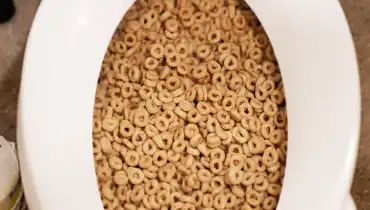Is it Sensible to Flush Food in the Toilet?
Is it Sensible to Flush Food in the Toilet?
Blog Article
How do you really feel on the subject of Think Twice Before Flushing Food Down Your Toilet?

Intro
Many individuals are frequently confronted with the problem of what to do with food waste, especially when it pertains to leftovers or scraps. One common question that arises is whether it's alright to flush food down the toilet. In this article, we'll explore the reasons people could think about flushing food, the effects of doing so, and alternative techniques for proper disposal.
Reasons that people might take into consideration flushing food
Absence of understanding
Some people might not understand the prospective harm caused by flushing food down the bathroom. They may mistakenly believe that it's a harmless method.
Ease
Purging food down the commode may appear like a quick and easy option to dealing with unwanted scraps, particularly when there's no neighboring trash bin available.
Idleness
In many cases, people may simply pick to flush food out of large laziness, without considering the repercussions of their activities.
Effects of flushing food down the toilet
Environmental impact
Food waste that winds up in rivers can contribute to pollution and damage water ecosystems. In addition, the water made use of to purge food can stress water sources.
Pipes issues
Purging food can result in clogged pipes and drains, creating pricey plumbing fixings and hassles.
Kinds of food that ought to not be flushed
Coarse foods
Foods with coarse appearances such as celery or corn husks can obtain tangled in pipelines and create blockages.
Starchy foods
Starchy foods like pasta and rice can take in water and swell, bring about obstructions in pipelines.
Oils and fats
Greasy foods like bacon or cooking oils should never be purged down the commode as they can solidify and trigger blockages.
Appropriate disposal approaches for food waste
Making use of a garbage disposal
For homes equipped with garbage disposals, food scraps can be ground up and purged through the pipes system. Nonetheless, not all foods are suitable for disposal in this manner.
Recycling
Particular food product packaging materials can be recycled, decreasing waste and decreasing environmental influence.
Composting
Composting is an eco-friendly means to dispose of food waste. Organic materials can be composted and made use of to enrich dirt for horticulture.
The importance of correct waste monitoring
Minimizing environmental harm
Proper waste monitoring methods, such as composting and recycling, aid lessen pollution and maintain natural deposits for future generations.
Securing pipes systems
By avoiding the method of flushing food down the bathroom, property owners can protect against pricey pipes repairs and preserve the integrity of their plumbing systems.
Final thought
To conclude, while it may be alluring to purge food down the commode for comfort, it's important to understand the possible repercussions of this action. By adopting correct waste administration practices and disposing of food waste sensibly, people can contribute to much healthier pipes systems and a cleaner environment for all.
FLUSH FOOD DOWN THE TOILET?
FLUSHING FOOD CAN CAUSE BLOCKED DRAINS IN YOUR HOME
All of the plumbing fixtures in your home are connected to the same sewer pipe outside of your home. This outdoor sewer pipe is responsible for transporting all the wastewater from your home to the Council sewer mains. Even small pieces of food that go down the kitchen sink can cause problems for your sewer. It should therefore be obvious that flushing larger bits of food, such as meat, risks a clog in either the toilet itself or the sewer pipes. Flushing greasy food is even more problematic because oil coagulates when it cools, coating the interior lining of your pipes.
THE TOILET IS NOT A BIN
Food isn’t the only thing that people shouldn’t be flushing down the toilet. People use the toilet to dispose of all kinds of things such as tampons, makeup wipes, dental floss, kitty litter and even underwear. Water goes to great lengths to educate residents about the high costs and stress placed on wastewater treatment systems simply from people flushing the wrong stuff down the toilet. It costs taxpayers millions of dollars each year, and homeowners thousands in blocked drain repairs.
FLUSHING FOOD IS A WASTE OF WATER
Flushing food is a waste of our most precious resource - water. In June this year Level 1 water restrictions were introduced to protect water supply from drought conditions. Much of New South Wales continues to be affected by prolonged drought with recent figures revealing up to 97 per cent of the state remains in drought. Depending on whether you have a single or dual flush toilet, every single flush uses between five and 11 litres of water. In the current climate this is a huge amount of water to be wasting on flushing food that should be placed in the bin (or better yet, the compost).
https://www.jabplumbingsolutions.com.au/blog/can-you-flush-food-down-the-toilet

Do you appreciate more info about Think Twice Before Flushing Food Down Your Toilet? Put feedback down below. We will be happy to see your responses about this blog posting. In hopes to see you back again soon. Be sure to set aside a second to distribute this article if you enjoyed it. Thanks so much for going through it.
Request Free Estimate Report this page